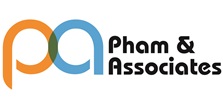
Bad Faith Trade Mark Filings
Bad faith trademark filings are an
international problem in the systems of intellectual property registration. Under
the Intellectual Property Law (“IP Law”), there is no specific definition of
“bad faith”, however, the concept of bad faith is scattered recognition in some
legislation as follows: Article 96.3 of the IP Law provides that “Any
organizations or individuals shall have the right to request the State
administrative authority of IP rights to invalidate a Protection Title in cases
provided for in paragraphs 1 and 2 of this Article, provided that fees shall be
paid. The time period for making request for invalidation of a Protection Title
shall be its whole term of protection. With regard to marks,
such time limit shall be 5 years as from the grant date, except for the case
where the Protection Title has been granted due to the applicant’s dishonesty”. Point 5.3 of Circular 01-2007-TT-BKHCN dated
February 14, 2007 of the Ministry of
Science and Technology provides that “Representatives of application
owners are accountable to application owners for all consequences of the
declaration or supply of untruthful information in transactions with the
National Office of Intellectual Property (“NOIP”) and
pay compensations for any damage caused”. Point 22.3 of the Circular also provides that a
complainant shall ensure the truthfulness of supplied proofs and are liable for
consequences of the supply of untruthful proofs. Generally, bad faith occurs where one
intentionally selects a mark to trade off the goodwill associated with another party’s mark. Bad
faith is not an independent basis for seeking to oppose/cancel another
application/registration. Evidence of bad faith, however, may support a finding
that confusion is likely and that the Applicant therefore should not be able to
register or use the applied-for mark. For proving bad faith, arguments and/or
evidences should be submitted for proving that the submission/omission must be
intentional. In other words, proof of intent to deceive is required to prove
bad faith. In trademark examining practice, it is rare for
the NOIP on its own initiative look for take action to identify bad faith but
in some cases, even though no opposition is filed, the NOIP refused the
applied-for marks since that are identical or confusingly similar to trademarks
that are considered by the NOIP as well-known marks. In those cases, the NOIP
considered that the trademark applications were applied in “bad faith”. In practice, if a person denounce a third party
took an action in bad faith to the NOIP, that person bears the burden of proof by submission of
clear and convincing evidence. The NOIP may inform the defendant about the
notification of bad faith and request the same to submit counter-argument
within a prescribed time. In some other cases, the NOIP may inform the
plaintiff of his opinion in respect of the notification. In order to have helpful strategies that could
be adopted to cancel/remove/oppose or otherwise take action against bad faith
filings, we should do the following Firstly, the
best solution to avoid bad faith filings in Vietnam is to file an application
for registration of the trade marks that are being used and/or to be used in
Vietnam as soon as possible. In practice, the cost for filing
and registration of trade marks in Vietnam is lower than that in many other
countries and is much lower than the cost for an Opposition, Invalidation
and/or a Cancellation cases. Secondly, in
practice, taking a Cancellation action is often much more costly and time-consuming
than an Opposition case. In addition, as the NOIP is often reluctant to cancel
a trademark registration, the chance of success in a Cancellation case is often
lower than that if we file an Opposition during the substantive examination of
that trademark. Therefore, it is advisable that the trade mark owner should
watch the trademark applications that are published in Vietnam
and file an Opposition action when necessary. Pham
& Associates


